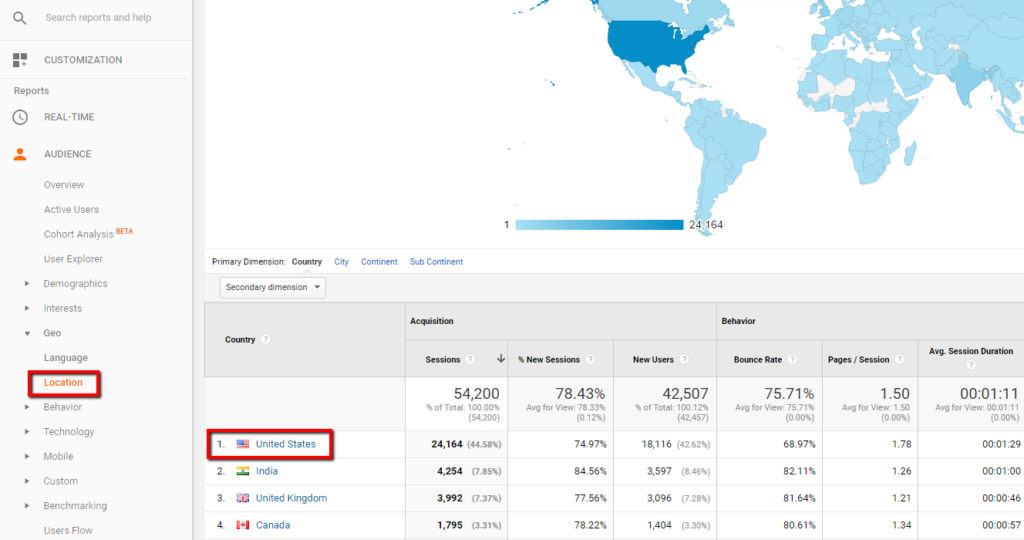Opening the Power of Secondary Dimension Analytics for Boosted Data Insights and Decision-Making
In the realm of data analytics, main measurements often take the spotlight, however the real deepness of understandings exists within the realm of additional measurements. These added data points use a nuanced viewpoint that can brighten relationships and patterns not readily obvious initially look. By harnessing the power of secondary dimension analytics, organizations can unveil covert trends, reveal relationships, and remove extra purposeful verdicts from their information. The possibility for boosted decision-making via the application of these second dimensions is vast, promising a deeper understanding of intricate information collections and leading the method for more educated strategic options.
Significance of Second Measurements
Checking out the significance of second measurements in analytics introduces the covert layers of data understandings important for informed decision-making in numerous domain names. Secondary measurements offer a much deeper understanding of key data by offering added context and perspectives. By including additional measurements into analytics, companies can draw out more nuanced and comprehensive insights from their datasets.
One trick significance of second dimensions is their capacity to section and categorize key data, enabling a much more detailed evaluation of specific subsets within a dataset. This division enables organizations to identify patterns, patterns, and outliers that might not appear when taking a look at the information as a whole. Second dimensions help in uncovering relationships and reliances between various variables, leading to more accurate forecasting and predictive modeling - secondary dimension.
In addition, second dimensions play a vital duty in boosting information visualization and reporting. By adding secondary measurements to visualizations, such as graphes or charts, experts can develop more insightful and helpful depictions of information, facilitating better interaction of searchings for to stakeholders. Overall, the integration of second measurements in analytics is crucial in opening the complete potential of information and driving evidence-based decision-making.
Secret Advantages of Making Use Of Additional Dimensions
Utilizing additional measurements in analytics uses organizations a critical advantage by augmenting the deepness and granularity of data understandings. By dissecting information using second measurements such as time, location, gadget type, or individual demographics, companies can discover patterns, fads, and connections that might otherwise stay surprise.
Moreover, the use of additional dimensions boosts the context in which main information is analyzed. By leveraging second measurements in analytics, companies can harness the full possibility of their information to drive better decision-making and attain their business goals.
Advanced Information Evaluation Strategies
A deep dive into sophisticated information evaluation methods exposes advanced techniques for drawing out useful understandings from complicated datasets. One such technique is device discovering, where algorithms are utilized to identify patterns within data, predict end results, and make data-driven choices. This approach enables the automation of analytical design building, enabling the handling of big volumes of data at a faster pace than typical approaches.
One more innovative method is predictive analytics, which uses analytical formulas and artificial intelligence techniques to anticipate future results based on historic data. By analyzing patterns and fads, services can anticipate consumer habits, market trends, and possible dangers, empowering them to make aggressive choices.
Moreover, message mining and belief evaluation are useful techniques for removing insights from unstructured information sources such as social media sites remarks, client reviews, and study responses. By assessing text information, organizations can recognize customer point of views, determine emerging fads, and improve their solutions or products based upon feedback.
Enhancing Decision-Making With Second Dimensions

Enhancing decision-making via secondary dimensions makes it possible for businesses to make more notified and targeted critical choices. By segmenting consumer information based on additional measurements like acquiring background or involvement levels, companies can tailor their marketing techniques to particular audience segments, leading to boosted conversion prices and consumer satisfaction. Second measurements can assist determine correlations and relationships in between various variables, allowing organizations to make data-driven decisions that drive development and earnings.
Implementing Second Measurement Analytics
When integrating additional dimensions in analytics, companies can open deeper understandings that drive critical decision-making and improve overall efficiency. Carrying out additional dimension analytics needs an organized technique to ensure effective usage of this powerful device. The initial step is to recognize the crucial metrics and dimensions that straighten with the organization's strategic objectives. This entails recognizing the certain questions the company seeks to address and the data factors needed to resolve them.

In addition, organizations must utilize advanced analytics tools and modern technologies to streamline the process of integrating second dimensions. These tools can automate data handling, evaluation, and visualization, allowing organizations to concentrate on More hints analyzing insights as opposed to hands-on information manipulation.
Conclusion
In verdict, second measurement analytics play a critical duty in boosting information insights and decision-making processes. By utilizing advanced information evaluation methods and carrying out additional dimensions successfully, companies can unlock the power of their data to drive critical organization choices.
In the realm of data analytics, key measurements commonly take the spotlight, but the real deepness of insights exists within the world of second measurements.Utilizing second measurements in analytics uses organizations a strategic benefit by increasing the depth and granularity of information insights. By leveraging secondary measurements in analytics, organizations can harness the complete capacity of their data to drive far better decision-making and attain look what i found their organization goals.
Implementing information validation procedures and routine audits can aid preserve data high quality and reliability.
By making use of sophisticated information analysis strategies and executing second measurements properly, organizations can unlock the power of their data to drive strategic company choices.